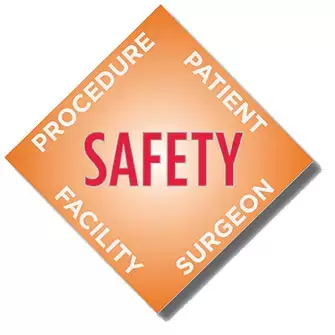Diabetic Foot
Diseases of the foot such as ulcers and deformities are more common in those with diabetes. In severe cases, they can result in loss of limb or life. Proper care would help to reduce the burden of such complications.
Diabetics are more prone to develop foot diseases due to various reasons. They include,
Since foot complications can lead to a reduction in quality of life and increased health expenditure, it is important to adopt preventive measures. These include,
Proper foot care is especially important in the case of the foot at risk. These include foot with deformities, presence of calluses and those with reduced sensation. Deformities refer to altered shape. They may be due to the impaired function of the small muscles of the foot. Calluses are thickening of the skin. Calluses are adaptive changes of the skin to increased pressure. Calluses also act as focal points of increased pressure. Due to this, they can lead to ulcers. Early management of calluses with paring and alterations in footwear can prevent the progress of foot ulcers.
Patients who are prone to ulcers should have a habit of daily inspection of all surfaces of the foot. In the presence of reduced skin sensation small ulcers or infection can be ignored because of the absence of pain. Early detection of such ulcers or infection can help by early intervention and healing.
In addition to the prevention of ulcers, the emphasis is also placed on measures to prevent ulcer recurrence. These are achieved by surgical and non-surgical offloading. Offloading helps by the distribution of the foot pressures. High focal pressures are a precursor of skin breakdown and ulcer formation. Non-surgical offloading is done using appropriate footwear. Surgical offloading is achieved with the help of procedures which tackle the local muscle imbalances. They may also involve the fusion of joints and procedures on tendons. Surgical offloading is recommended during the early presentations. They are done on foot at risk. They are also carried out after ulcer healing.
Once patients have developed an ulcer, the treatment is aimed at expediting the healing. Imaging is frequently performed to assess the extent of involvement. This can vary from a simple X-ray, CT scan, MRI and studies to assess the vascularity of the limb. These help us to formulate a treatment plan. Infections indicate tissue destruction by microorganisms. Most commonly these are due to the presence of bacteria. Tissue cultures obtained from the wounds help guide appropriate antimicrobials.
An important factor that influences wound healing is the level of vascularity of the limb. Diabetics are prone to develop diseases of the limb vessels. This may cause reduced blood flow and this can, in turn, reduce the ability of a wound to heal. Interventions on the vessels are sometimes carried out either by endovascular or surgical bypass to improve the blood flow to the lower limb.
Wound healing is negatively affected due to the presence of infection and dead tissue within the wound. Removal of dead tissue and reduction of the bacterial load of a wound sets the stage for wound healing. Wound debridement refers to steps taken for the removal of dead tissue. This may be undertaken with the help of surgery or with a more conservative approach. Once the wound is clean, the next step would be to achieve closure. Closure of a wound can be achieved either by utilizing different surgical procedures like skin grafts or flaps. In certain superficial wounds, closure can also be achieved with dressings to facilitate wound contraction and healing from the edges. This is known as healing by secondary intention. This is a slow process and may take many weeks or months in a large wound. Unfortunately, some of the wounds can't be salvaged in spite of the best efforts. These usually end up as amputations.
Once wounds have healed the next important strategy is to prevent ulcer recurrence. This is achieved using both surgical and non-surgical offloading. Limb salvage and reduction of amputations is an important goal in the management of diabetic foot diseases. This is a multidisciplinary approach. It requires input from various medical specialists, nurses, physiotherapists, and orthotists. Also important is the role of the well-aware patient in both the prevention and treatment of a diabetic foot ulcer.
Diabetics are more prone to develop foot diseases due to various reasons. They include,
- Reduced protective sensation
- Deformities due to impaired function of small muscles of the foot
- Alteration in the skin making them more prone to dryness and cracks
- Greater likelihood of blood vessel disease and reduced vascularity of the limb
Since foot complications can lead to a reduction in quality of life and increased health expenditure, it is important to adopt preventive measures. These include,
- A healthy lifestyle with appropriate diet and exercise
- Adequate control of blood sugar
- Routine screening for diabetes-related complications
- Proper foot care and timely medical care in case of foot deformities or other problems.
Proper foot care is especially important in the case of the foot at risk. These include foot with deformities, presence of calluses and those with reduced sensation. Deformities refer to altered shape. They may be due to the impaired function of the small muscles of the foot. Calluses are thickening of the skin. Calluses are adaptive changes of the skin to increased pressure. Calluses also act as focal points of increased pressure. Due to this, they can lead to ulcers. Early management of calluses with paring and alterations in footwear can prevent the progress of foot ulcers.
Patients who are prone to ulcers should have a habit of daily inspection of all surfaces of the foot. In the presence of reduced skin sensation small ulcers or infection can be ignored because of the absence of pain. Early detection of such ulcers or infection can help by early intervention and healing.
In addition to the prevention of ulcers, the emphasis is also placed on measures to prevent ulcer recurrence. These are achieved by surgical and non-surgical offloading. Offloading helps by the distribution of the foot pressures. High focal pressures are a precursor of skin breakdown and ulcer formation. Non-surgical offloading is done using appropriate footwear. Surgical offloading is achieved with the help of procedures which tackle the local muscle imbalances. They may also involve the fusion of joints and procedures on tendons. Surgical offloading is recommended during the early presentations. They are done on foot at risk. They are also carried out after ulcer healing.
Once patients have developed an ulcer, the treatment is aimed at expediting the healing. Imaging is frequently performed to assess the extent of involvement. This can vary from a simple X-ray, CT scan, MRI and studies to assess the vascularity of the limb. These help us to formulate a treatment plan. Infections indicate tissue destruction by microorganisms. Most commonly these are due to the presence of bacteria. Tissue cultures obtained from the wounds help guide appropriate antimicrobials.
An important factor that influences wound healing is the level of vascularity of the limb. Diabetics are prone to develop diseases of the limb vessels. This may cause reduced blood flow and this can, in turn, reduce the ability of a wound to heal. Interventions on the vessels are sometimes carried out either by endovascular or surgical bypass to improve the blood flow to the lower limb.
Wound healing is negatively affected due to the presence of infection and dead tissue within the wound. Removal of dead tissue and reduction of the bacterial load of a wound sets the stage for wound healing. Wound debridement refers to steps taken for the removal of dead tissue. This may be undertaken with the help of surgery or with a more conservative approach. Once the wound is clean, the next step would be to achieve closure. Closure of a wound can be achieved either by utilizing different surgical procedures like skin grafts or flaps. In certain superficial wounds, closure can also be achieved with dressings to facilitate wound contraction and healing from the edges. This is known as healing by secondary intention. This is a slow process and may take many weeks or months in a large wound. Unfortunately, some of the wounds can't be salvaged in spite of the best efforts. These usually end up as amputations.
Once wounds have healed the next important strategy is to prevent ulcer recurrence. This is achieved using both surgical and non-surgical offloading. Limb salvage and reduction of amputations is an important goal in the management of diabetic foot diseases. This is a multidisciplinary approach. It requires input from various medical specialists, nurses, physiotherapists, and orthotists. Also important is the role of the well-aware patient in both the prevention and treatment of a diabetic foot ulcer.



